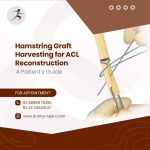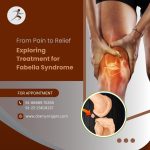Shoulder pain can significantly affect your daily life, making it difficult to perform simple tasks like lifting objects or even moving your arm. Two of the most common causes of shoulder pain are arthritis and bursitis. While both conditions involve inflammation and can cause discomfort, they affect different parts of the shoulder and require different treatment approaches. Understanding the differences between arthritis and bursitis, and consulting a shoulder specialist in Mumbai, can help you get the right diagnosis and treatment.
Understanding the Shoulder Joint
The shoulder is a complex joint made up of three bones: the humerus (upper arm bone), scapula (shoulder blade), and clavicle (collarbone). It is a ball-and-socket joint, allowing for a wide range of motion. The rotator cuff, a group of muscles and tendons, helps stabilize the shoulder, while bursae (small, fluid-filled sacs) reduce friction between tissues. When issues arise in any part of the shoulder, pain and limited mobility can occur.
What is Shoulder Arthritis?
Shoulder arthritis is the degeneration or wear-and-tear of the cartilage within the joint. Cartilage is the smooth tissue that covers the bones in a joint, allowing them to move smoothly against each other. In arthritis, this cartilage breaks down, causing the bones to rub together, leading to pain, swelling, and stiffness. There are different types of arthritis that can affect the shoulder:
- Osteoarthritis: This is the most common form of arthritis, especially in older adults. It occurs due to the gradual wearing down of cartilage over time. The shoulder joint becomes painful, stiff, and swollen.
- Rheumatoid Arthritis: This is an autoimmune disease where the body’s immune system mistakenly attacks the synovial lining of the joints, including the shoulder. Rheumatoid arthritis often affects both shoulders simultaneously and can lead to significant damage if left untreated.
- Post-traumatic Arthritis: This form of arthritis can develop after a shoulder injury, such as a fracture or dislocation. The trauma damages the cartilage, leading to long-term wear and tear on the joint.
Symptoms of Shoulder Arthritis:
- Pain in the shoulder, especially during movement
- Stiffness and reduced range of motion
- Swelling and tenderness
- Grinding or clicking sensation during movement
- Increased pain with activities like lifting or overhead movements
Consulting a shoulder surgeon in Mumbai can help confirm a diagnosis of shoulder arthritis and discuss possible treatment options, which may include medication, physical therapy, or even joint replacement surgery in severe cases.
What is Shoulder Bursitis?
Bursitis is the inflammation of the bursae, the small fluid-filled sacs that cushion the tendons, muscles, and bones around the joint. In the shoulder, the bursae help reduce friction between the rotator cuff and the top of the shoulder blade (acromion). When these sacs become irritated or inflamed, it results in bursitis. Shoulder bursitis is often caused by repetitive overhead movements, poor posture, or direct trauma to the shoulder.
Types of Shoulder Bursitis:
- Acute Bursitis: This occurs suddenly, usually due to overuse or an injury. It may cause intense pain, swelling, and limited mobility.
- Chronic Bursitis: This is the result of repeated irritation or overuse of the shoulder. Chronic bursitis can lead to long-term inflammation, resulting in persistent pain and discomfort.
Symptoms of Shoulder Bursitis:
- Sharp, stabbing pain in the shoulder, especially with movement
- Tenderness around the shoulder
- Limited range of motion
- Pain when lying on the affected side
- Swelling and warmth around the joint
- Pain that worsens with activities like reaching or lifting overhead
Shoulder bursitis is commonly misdiagnosed as arthritis, as both conditions can cause similar symptoms. A shoulder specialist in Mumbai can perform a physical exam and imaging tests, such as X-rays or MRIs, to determine the exact cause of your shoulder pain.
Differences Between Shoulder Arthritis and Bursitis
While arthritis and bursitis can cause similar symptoms, the underlying issues and treatments are quite different:
- Location of the Problem:
- In arthritis, the problem lies in the joint itself, specifically the wearing down of the cartilage between the bones.
- In bursitis, the inflammation is centered in the bursae, which are located outside of the joint.
- Nature of the Pain:
- Arthritis pain tends to be more constant and worsens with movement or after prolonged activity.
- Bursitis pain is often sharper and more focused on specific movements, especially overhead motions.
- Age of Onset:
- Arthritis is more common in older adults due to the natural wear and tear on joints.
- Bursitis can affect individuals of any age, particularly those who engage in repetitive motions, such as athletes or laborers.
- Treatment Options:
- Arthritis treatment may involve medications like anti-inflammatories or corticosteroid injections, physical therapy, and in severe cases, joint replacement surgery by a joint replacement specialist in Mumbai.
- Bursitis treatment typically includes rest, ice, physical therapy, and sometimes corticosteroid injections to reduce inflammation.
Diagnosis of Shoulder Pain: Is it Arthritis or Bursitis?
Accurately diagnosing whether your shoulder pain is due to arthritis or bursitis requires a thorough evaluation by a shoulder specialist in Mumbai. Your doctor will start by taking a detailed medical history and asking about your symptoms, activity level, and any previous injuries. A physical exam will be conducted to assess your shoulder’s range of motion, strength, and areas of tenderness.
Imaging studies such as X-rays or MRIs are often necessary to distinguish between arthritis and bursitis. X-rays can show signs of cartilage loss and bone changes consistent with arthritis, while MRIs can reveal inflammation of the bursae or rotator cuff injuries.
In some cases, your doctor may perform an aspiration, where fluid is removed from the swollen bursa and tested for infection or inflammation. This can help rule out other conditions like septic bursitis.
Treatment Options for Shoulder Arthritis and Bursitis
Treatment for Shoulder Arthritis:
- Medications: Nonsteroidal anti-inflammatory drugs (NSAIDs) can help reduce pain and inflammation in both osteoarthritis and rheumatoid arthritis. Disease-modifying antirheumatic drugs (DMARDs) are used to manage rheumatoid arthritis.
- Physical Therapy: Exercises can help improve shoulder flexibility and strength, reducing the strain on the joint.
- Injections: Corticosteroid injections can provide temporary relief from inflammation and pain. Hyaluronic acid injections may also be used to lubricate the joint.
- Surgery: If non-surgical treatments fail to provide relief, a shoulder surgeon in Mumbai may recommend shoulder replacement surgery. Joint replacement is often the best option for severe arthritis cases where the cartilage is significantly damaged.
Treatment for Shoulder Bursitis:
- Rest and Ice: Resting the shoulder and applying ice packs can help reduce inflammation and pain in the early stages of bursitis.
- Physical Therapy: A therapist can guide you through exercises to strengthen the shoulder muscles, improve posture, and prevent future flare-ups.
- Injections: Corticosteroid injections can be used to reduce inflammation in the bursae and provide relief from pain.
- Surgery: In rare cases, if bursitis does not respond to conservative treatment, surgery may be required to remove the inflamed bursa.
Conclusion
Shoulder pain can be debilitating, but getting an accurate diagnosis is essential for effective treatment. Whether your pain is due to arthritis or bursitis, consulting a shoulder specialist in Mumbai can help you determine the best course of action. Understanding the differences between these two conditions is the first step toward finding relief and regaining full shoulder function. If surgery is needed, a joint replacement specialist in Mumbai can provide you with the best options to restore your quality of life.
For more information or to book a consultation with Dr. Amyn Rajani, visit OAKS clinic at Hughes Road, Mumbai or website www.dramynrajani.com or simply call on Clinic Number 91-88989 75355 / 91-22-23619137 to take the first step towards a pain-free future.




